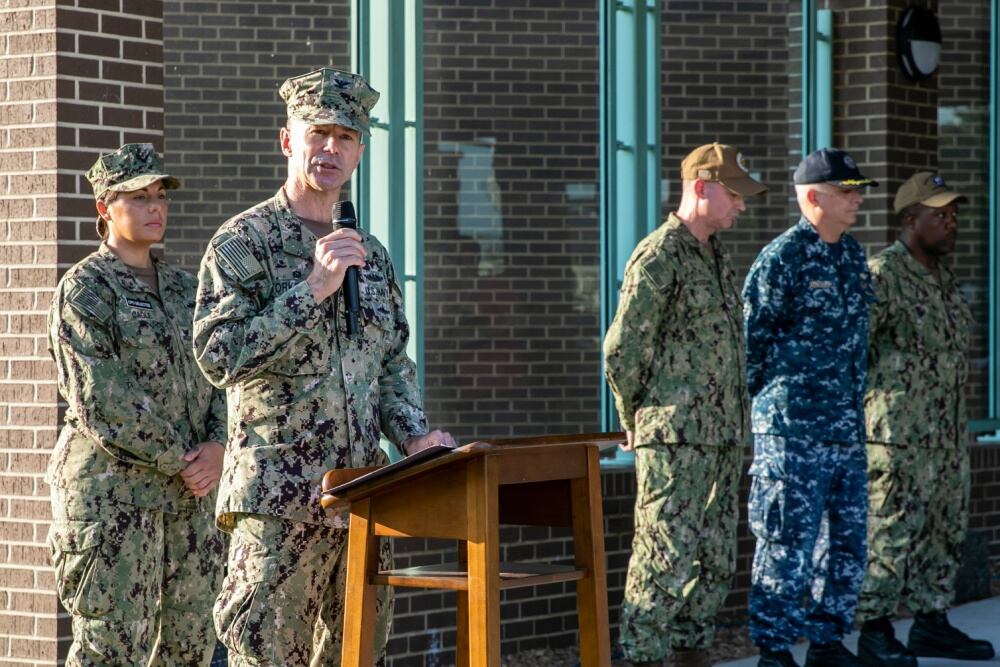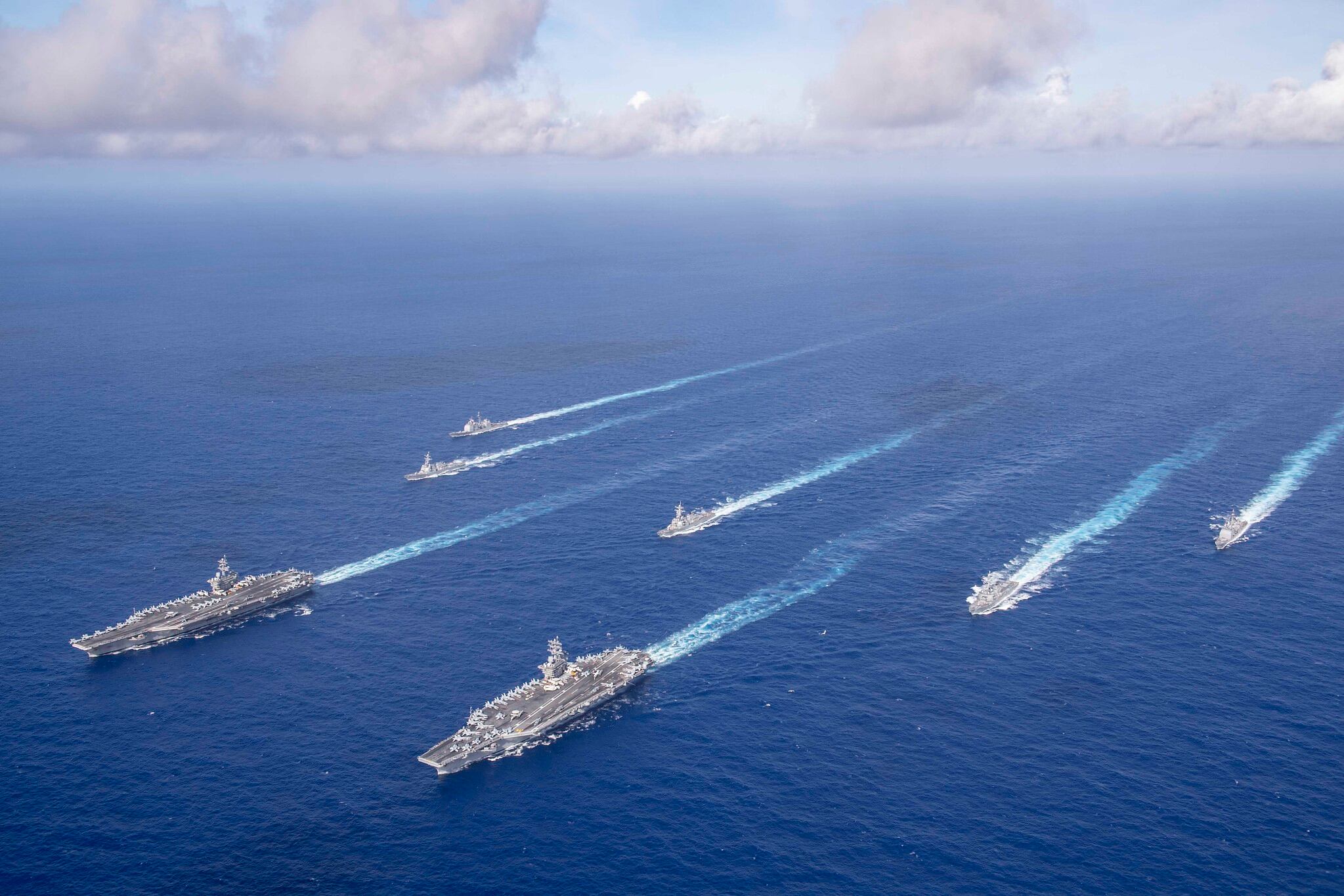Navy ships that can’t regularly deploy due to maintenance delays aren’t “worth much,” Virginia Rep. Rob Wittman said Wednesday. And if those ships aren’t at sea, they aren’t sending the right message to U.S. adversaries.
“We can have the greatest ships in the world, from our nuclear aircraft carriers to our submarines to our destroyers,” said Wittman, the ranking Republican on the House Armed Services seapower and projection forces subcommittee, during a virtual Heritage Foundation event. “But if we can’t keep them on a regular cycle of being deployed, then they’re not worth much.”
According to a Government Accountability Office report released in August, Navy shipyards “continue to face persistent and substantial maintenance delays that hinder the readiness of aircraft carriers and submarines” — even though the Navy put down $2.8 billion in capital investments from fiscal 2015 to fiscal 2019 to boost shipyard performance.
The report also determined that 75 percent of planned maintenance periods at the Navy’s four shipyards were delayed for aircraft carriers and submarines with planned completion from FY2015 to FY2019 . Altogether, that added up to a total of 7,424 days of maintenance delays, which Wittman said means less time for ships to deploy at sea.
“That creates problems for the United States, especially when it is critically important that we have presence around the world to deter our enemies,” Wittman said. “If our ships aren’t there, that sends a signal to our adversaries about where we are and our seriousness concerning the United States Navy.”
RELATED

Wittman outlined several changes that must occur in Navy shipyards, including increasing their capacity to update infrastructure with new workspace and technology. That’s critical in attracting young people to work at these shipyards, he said. At the same time, he noted it’s important to keep senior personnel who are experienced.
“If you have a less experienced workforce, you’re going to have more hiccups in how the work gets done,” Wittman said.
Likewise, he stressed the layout of the shipyards must become more efficient so time isn’t wasted retrieving tools or materials, and the condition of dry docks must improve in order to mitigate accidents.
RELATED

The Navy has taken several actions to revamp its shipyards, and the Shipyard Infrastructure Optimization Program established in 2018 pours $21 billion into modernizing infrastructure at the four naval shipyards over the course of 20 years. The program’s priorities include repairing dry docks, updating shipyard facilities, and replacing and refurbishing old capital equipment, according to the Navy.
Wittman said the program was a step in the right direction, but noted the Navy needs to move more quickly to accomplish such goals. Also worrisome, he said, is that the program is tailored for today’s fleet and doesn’t adequately take into account future needs as the Navy adopts more unmanned vessels and new technologies.
“The heartache that I have about it is, it’s $21 billion over 20 years,” Wittman said. “Twenty years is too long a period of time with which to achieve this. I think the Navy needs to get much more aggressive about this and shorten that period of time. I don’t think that we have 20 years to do these things.”
The defense policy bill that the House passed in July includes a provision that would require the Navy to provide biannual briefings to congressional defense committees on the Shipyard Infrastructure Optimization Plan and provide lawmakers updates on military construction and facility sustainment projects from now until 2025.
The measure is not included in the Senate’s version of the bill.
In a conflict with China, shipbuilding and maintenance delays would severely disadvantage the U.S., Wittman said. China has ramped up its shipbuilding capacity and now has approximately 350 ships and submarines.
A 2020 Department of Defense report to Congress says that China is the “top ship-producing nation in the world by tonnage and is increasing its shipbuilding capacity and capability for all naval classes.” For Wittman, these swelling shipbuilding and maintenance capabilities are concerning.
“That’s worrisome because if we do have an extended conflict, there is going to be damage and attrition,” Wittman said.
“If our yards don’t have the ability to get ships back to sea, or even to produce additional ships if it’s an extended conflict, and China does, that gives them an overwhelming superiority in the conflict and it doesn’t bode well for us,” he said.
The Navy doesn’t have as many shipyards as it had after World War II, thanks in large part to the Base Realignment and Closure Act Congress passed in 1988. The measure led to the closures of Philadelphia Naval Shipyard in Pennsylvania, Mare Island Naval Shipyard and Long Beach Naval Shipyard in California, and Charleston Naval Shipyard in South Carolina, according to The Heritage Foundation.
The U.S. Navy currently has approximately 293 ships. Defense News reported this month that the Pentagon is eying an expansion of the fleet to 530 ships, which would include more small surface combatants, unmanned ships and submarines, and an expanded logistics force.
That’s roughly a 35 percent increase in fleet size from the current target of 355 manned ships by 2030.




